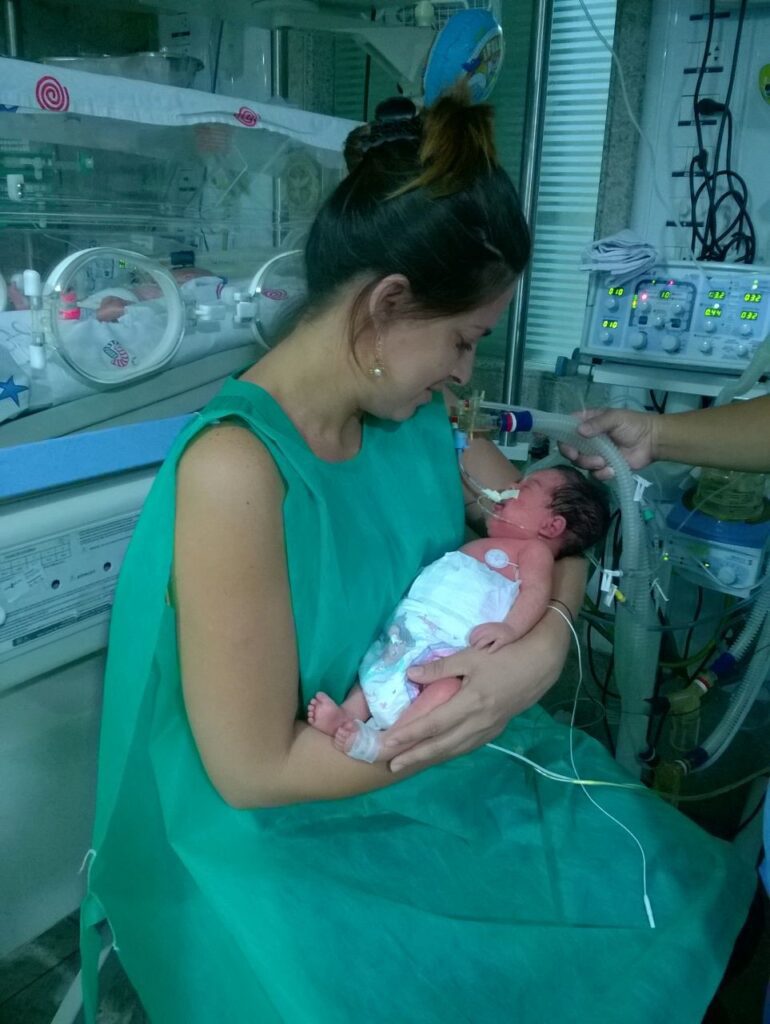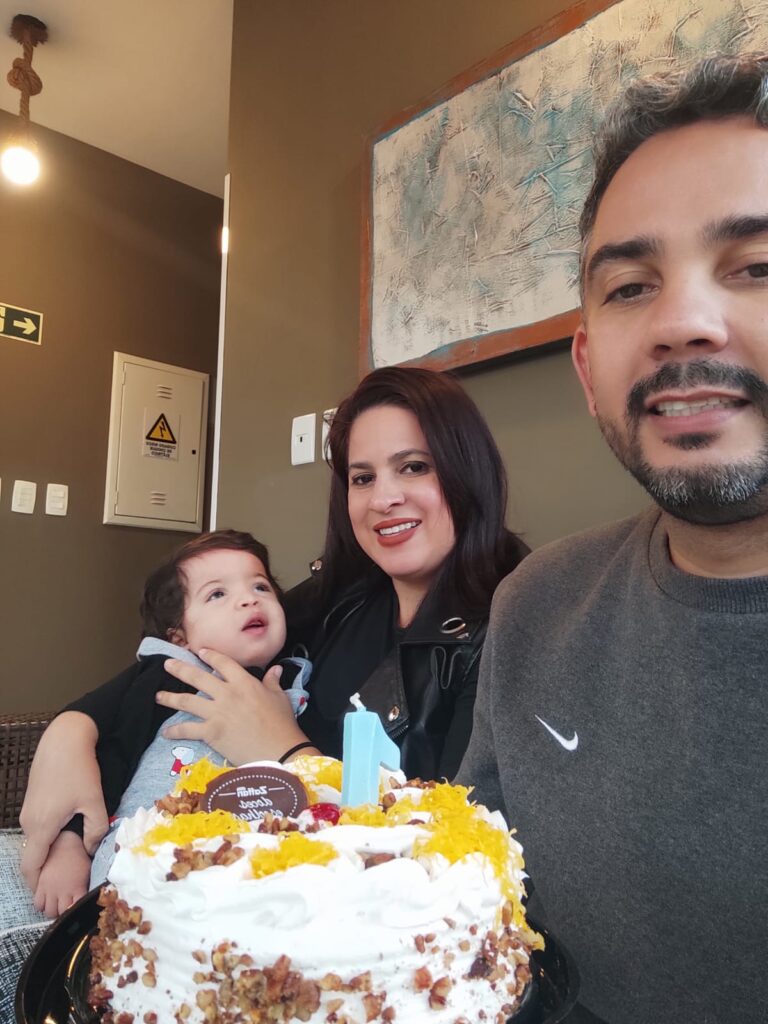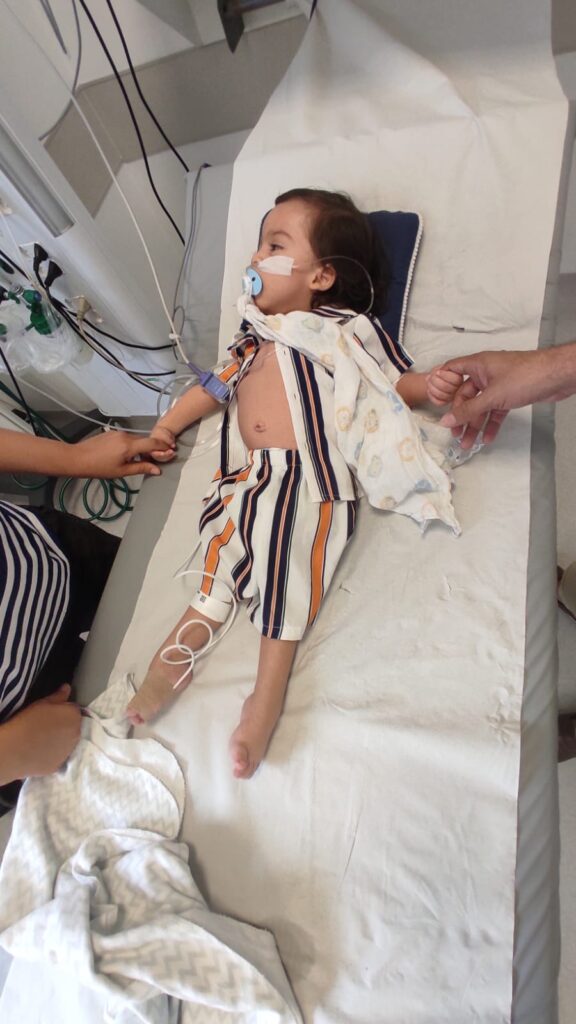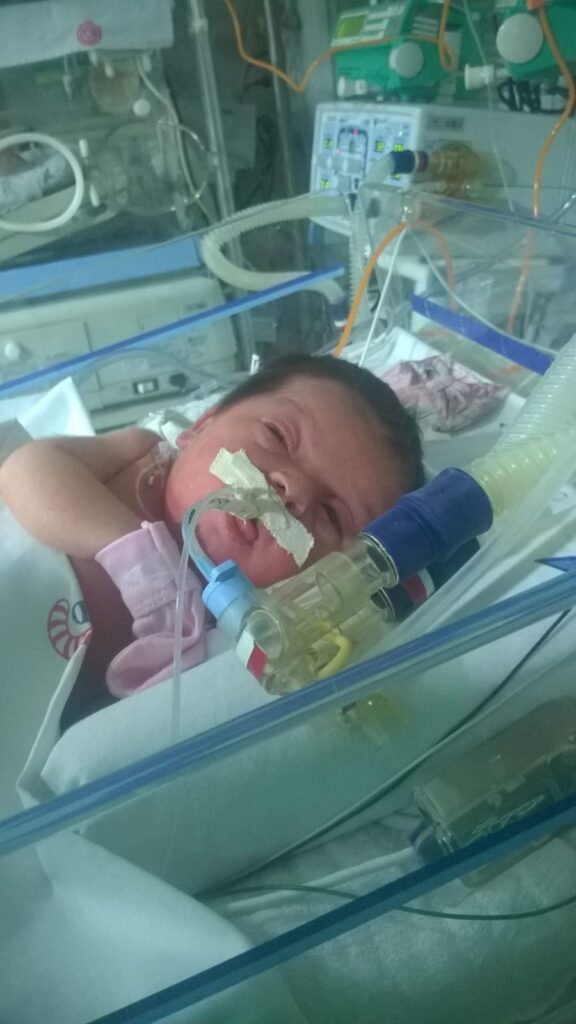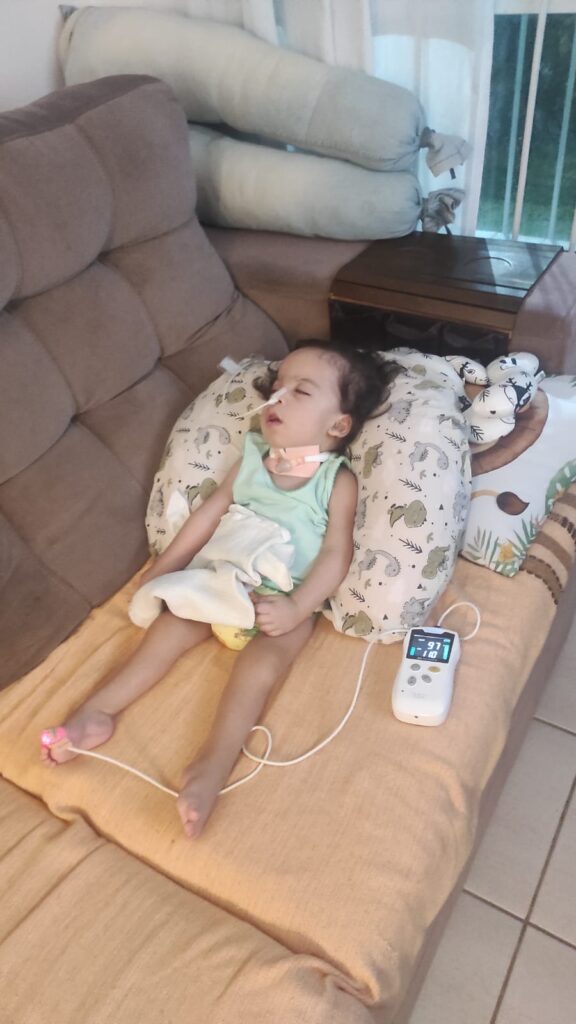Joaquim and Sofia’s story, by their father
“Our current focus is on keeping Joaquim as comfortable as possible.”
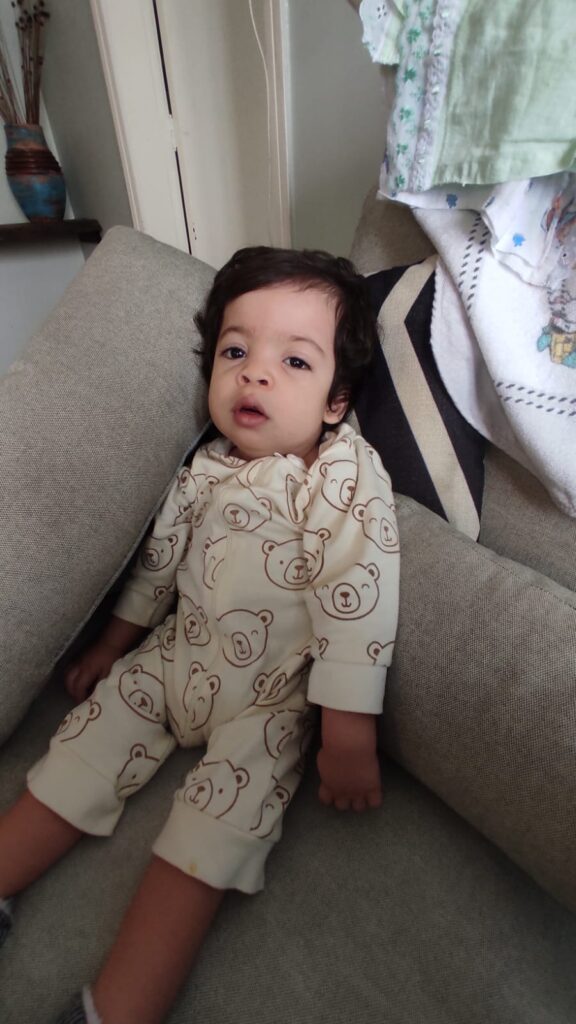
How has GM1 gangliosidosis affected your child?
In 2016/2017, my wife and I became pregnant with Sofia. During the pregnancy, we discovered a large amount of fluid in our baby’s thoracic area, pressing on the lungs. Our daughter was born prematurely at 7 months, in May 2017, and went straight to the ICU. She spent a month in critical condition and no one knew what was wrong. Tragically, Sofia passed away just two days after tests were taken to learn about her condition. She was only one month old. It was only after her passing that we received the diagnosis of GM1 gangliosidosis.
In 2021, unexpectedly, we became pregnant again, with Joaquim. Around the fourth month of the pregnancy, we saw the same fluid issue appear, but this time in a smaller volume. By 8.5 months, the fluid had dissipated by more than 95%. Joaquim was born full-term, staying only 5 days in the hospital for observation.
As Joaquim grew, we noticed he was a “floppy” baby who didn’t turn over. When he was about 5-6 months old, we had the opportunity to participate in a gene therapy study in Porto Alegre (Brazil), through the Clinical Research Center of the UFRS’s University Hospital. Until 1.5 years old, Joaquim’s condition was stable – he didn’t worsen, but he also didn’t improve.
At 1 year and 5 months, Joaquim began having respiratory problems. He had surgery to improve his condition, but eventually needed a tracheostomy. This January, he started having frequent convulsions and spasms. Currently, he is at home with home care and is more dependent on the respirator than before.
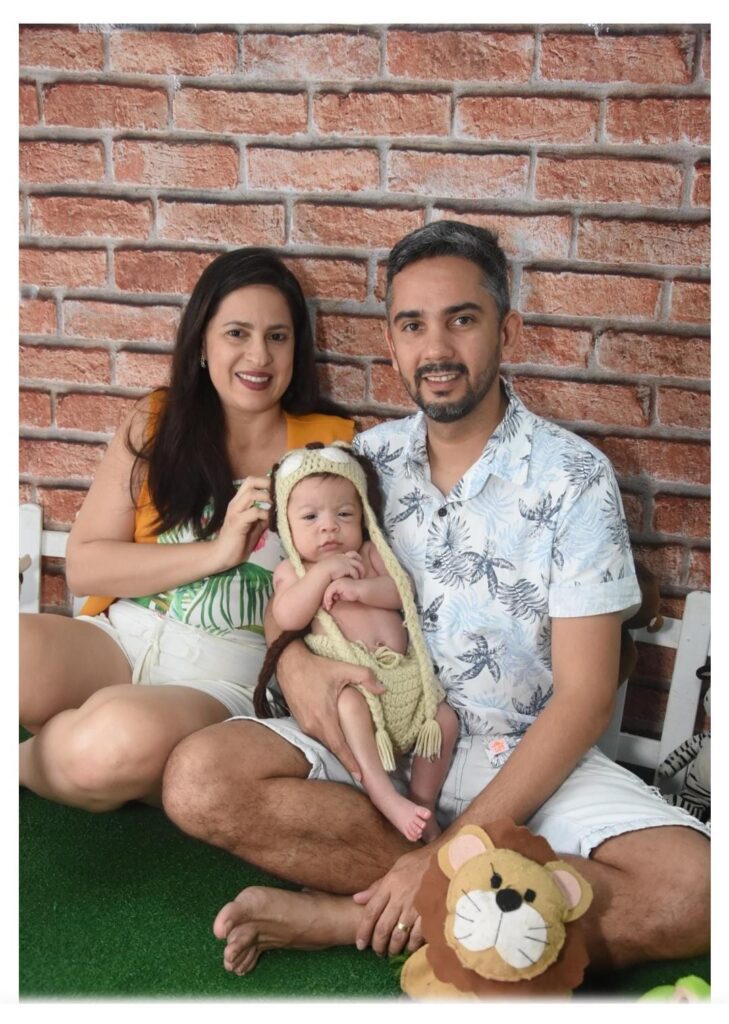
How does GM1 impact your family?
This experience has affected our family in several ways. As a couple, my wife and I feel stronger. We continue to have plans for the future, but our current focus is on keeping Joaquim as comfortable as possible. We feel very isolated socially, both from our families and friends. It’s challenging to maintain relationships when so much of our time and energy are devoted to Joaquim’s care. My wife, Fabíola, spends most of her free time caring for him – giving him baths, holding him, just being with him.
In the end, while caring for a child with GM1 is incredibly challenging, we’re grateful for the resources and support we have. We have a car, health insurance, employment, home care – things that many families in similar situations might not have. We try to keep that perspective, even on the toughest days.
Do you think participating in the Gene Therapy study was worth it?
Yes and I recommend other families to participate if they have the opportunity. There are two main reasons for this:
First, it provides access to doctors who are studying the disease. They may not have all the answers, but they can offer guidance and support that most regular doctors can’t, because they’re unfamiliar with GM1.
Second, it contributes to research that might help others in the future. Even if it doesn’t directly benefit our child, the data collected, the observations made – all of it could be crucial in developing future treatments.
Participating in the study gave us knowledge and a better understanding of GM1. Now, when we need to go to the hospital, we can effectively explain Joaquim’s condition to the doctors. We have the information to help them make informed decisions about his care.
Why should people support the Cure GM1 Foundation and rare diseases?
Of course, we hope for a cure or at least something that can halt or slow down the progression of the disease. We know this is a long-term goal and that science takes time. That’s why we participated in the gene therapy study – not because we expected immediate results for Joaquim, but to contribute to potential future breakthroughs. We want to do our part to help advance the research.
Joaquim passed away on April 21st, 2025. This was approximately one month before his third birthday.
